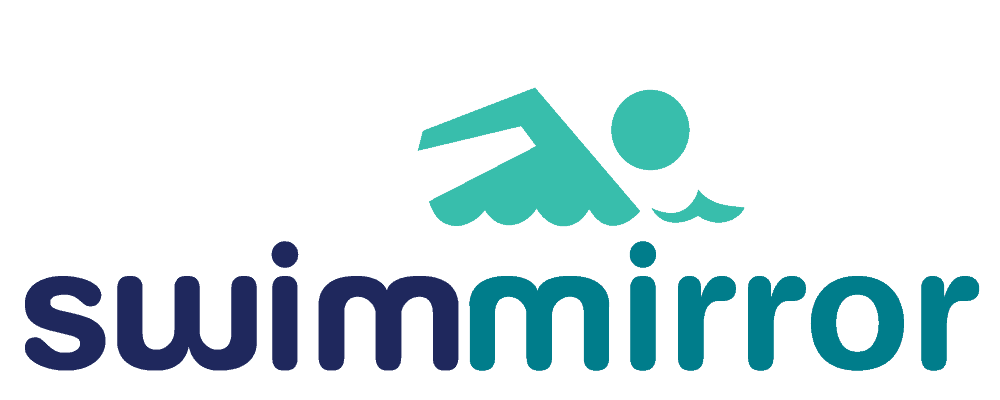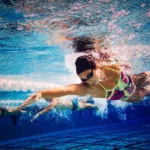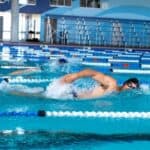How To Start A Swim School: Expert Guide To Modern Facility Design

Modern swim schools are increasingly moving beyond traditional rectangular pool designs, with facilities like the Steve Miklos Aquatic Center generating an additional $600,000 in revenue over 15 years through specialized features. Starting a swim school requires a strategic approach to facility design that balances user experience with revenue potential.
Special features such as lazy rivers, water slides, and inflatables attract different demographics while significantly improving attendance. Swimming pool depth dimensions must accommodate various age groups, while standard swimming pool dimensions need careful planning—especially considering competition pools can cost between $320,000 to $1.3 million USD to build. Additionally, indoor pools typically cost 50% more to operate than outdoor facilities due to heating and ventilation requirements.
This article explores the essential elements of modern swim school development, from defining your business model to integrating accessibility features like ramps and lifts. Through expert insights and real-world examples like the Rogue Credit Union Community Complex in Medford, Oregon, readers will discover how thoughtful facility design can transform an aging aquatic center into a thriving, multi-purpose swimming destination.
Defining Your Swim School Vision and Business Model
Establishing a swim school requires clearly defined vision and strategic planning before diving into pool construction. The swim school market is estimated at $17 billion with 50 million children under 12 in the U.S., yet remarkably, less than $1 billion of this market is currently being served. This substantial gap presents a promising opportunity for entrepreneurs looking to enter this growing industry.
Target Audience and Program Goals
Understanding your target demographics forms the foundation of any successful swim school. Swimming ranks as the fifth most popular activity in America according to Fitness Equipment Source, appealing to diverse age groups from toddlers to seniors. When defining your swim school’s vision, consider:
- Primary Demographics: Parents with children aged 6 months to 12 years typically form the largest market segment, with children under 5 years representing approximately 25% of the market.
- Secondary Markets: Special needs children (15% of market with 15% annual growth potential) and adults seeking technique improvement.
Effective swim schools develop buyer personas—semi-fictional representations of ideal customers—to narrow marketing focus. Instead of broadly targeting “families who need swim lessons,” successful operators identify 2-3 specific personas based on factors like geographic location, household income, number of children, and commuting distance.
How to Start a Swim School Business: Legal and Licensing Steps
Navigating legal requirements is critical when launching a swim school. First, select a business structure—LLC formation is often recommended over sole proprietorships or partnerships because it protects personal assets from business liabilities. Subsequently, secure these essential credentials:
- Business License: Required from local government to operate legally
- Health Department Permit: Ensures water quality and facility sanitation meet public health standards
- Pool Operation Permit: Specific authorization for aquatic facilities
- Insurance Coverage: General liability, professional liability, and workers’ compensation policies protect against accidents and claims
Furthermore, obtain proper certifications from organizations like American Red Cross, YMCA, or National Swimming Pool Foundation to demonstrate instructor qualifications. These credentials not only satisfy legal requirements but also build trust with potential clients.
Choosing Between Private, Franchise, or Community Models
Each business model offers distinct advantages for swim school entrepreneurs:
Private Independent Model:
- Lower initial investment without franchise fees
- Complete control over curriculum and operations
- Flexibility in pricing and programming
- Challenging to establish brand recognition initially
Franchise Model:
- Proven systems and brand recognition
- Comprehensive support and training
- British Swim School operates 350+ locations across the U.S. and Canada
- Big Blue Swim Schools average gross revenue reached $1.9 million with EBITDA of $328,594 (for schools operating 3+ years)
- Lower investment costs through pool rental rather than construction
Community/Partnership Model:
- Collaborate with existing facilities (schools, recreation centers)
- Reduced overhead through shared resources
- Group discounts increase enrollment volume
- Builds community relationships and referral networks
Some operators opt for specialized approaches—Worden Aquatics follows a “personal trainer” model, leasing lane space at commercial pools rather than owning facilities, thus reducing overhead costs.
Regardless of model chosen, most swim schools benefit from recurring revenue structures. Families typically enroll in lessons and continue until withdrawal, creating predictable cash flow and straightforward expense management.
Designing the Facility: Layout, Zones, and Flow
The physical layout of a swim school directly impacts both programming capabilities and operational efficiency. Intelligent pool design provides better comfort, advances utilization for different age groups, and enables ease of access, consequently creating a more inclusive swim facility for all participants.
Standard Swimming Pool Dimensions for Learn-to-Swim and Lap Use
Modern swim schools utilize various pool configurations to accommodate diverse programming needs:
Learn-to-Swim Pools: These smaller, shallower pools typically measure 12-15 meters (39-49 feet) in length and 6-8 meters (20-26 feet) in width. This intimate setting creates an optimal environment for beginners gaining water confidence.
Short Course Pools: Most commonly found in high schools and public facilities, these pools measure either 25 yards (SCY) or 25 meters (SCM) in length. They typically feature four or more lanes and remain the standard for many community-based swim schools.
Long Course/Olympic Pools: These facilities measure 50 meters (164 feet) in length and 25 meters (84 feet) in width, featuring 8-10 lanes each 2.5 meters (8.2 feet) wide. Although less common for dedicated swim schools, partnerships with facilities housing these pools can expand advanced programming options.
For most rectangular in-ground swimming pools, the average dimensions range from 10×20 feet (smaller pools) to 20×40 feet (larger pools). Notably, some facilities incorporate movable bulkheads to divide pools and create simultaneous teaching stations, maximizing space utilization.
Swimming Pool Depth Dimensions for Different Age Groups
Pool depth significantly influences safety and programming capabilities. Standard recommendations include:
For Young Children: The shallow end should measure at least 2 feet deep for beginners, with wading pools ranging from 0.3-0.6 meters (1-2 feet) in depth. Children should ideally avoid swimming in areas deeper than 4 feet, allowing them to swim freely without becoming fully submerged.
For General Recreation: The recommended depth ranges from 3.5-5 feet, varying based on factors like the maximum number of users and property layout. This depth enables users to move with ease, stand, and swim effectively.
For Lap Swimming: Depths of 3.5-4 feet provide complete range of motion without swimmers scratching their knuckles on the pool bottom. The shallow end should be at least 33 inches (838 mm) deep but not exceed 4 feet (1219 mm).
For Competitive Swimming: Competition pools require a minimum depth of 2 meters (6.6 feet) to meet international standards, with a gradual transition from shallow to deep ends occurring at no less than 33 inches (838 mm) depth and at least 6 feet (1829 mm) from the shallow end wall.
For Diving Areas: Any pool with a diving section should measure a minimum of 10 feet deep.
Incorporating Viewing Areas and Dry Zones
Successful swim schools strategically integrate viewing areas and dry zones to enhance the overall experience:
Parent viewing areas should feature fall-resistant anti-microbial carpet, comfortable chairs, and complimentary WiFi, providing an environment where parents can monitor their child’s swimming progress. Equally important, spectator spaces should remain separated from deck areas to avoid conflicts between participant and spectator circulation.
For safety and operational efficiency, consider:
- Placing QR codes at strategic locations to provide easy access to class schedules and registration information
- Ensuring deck space is wide enough to accommodate swimmers, instructors, and coaches without impeding spectator viewing
- Incorporating multifunctional spaces at deck level, such as hospitality rooms that can serve for tournament timing, hosting, or classroom instruction
Moreover, when designing viewing areas for competitive events, the layout should provide appropriate deck seating and circulation. The Steve Miklos Aquatic Center, for instance, features specific deck space dimensions: 20 feet at the starting end, 14 feet at the turning end, and 17.5-18 feet on the sides to accommodate spectator seating.
Choosing Special Features to Attract and Retain Swimmers
Strategic selection of special features can dramatically increase attendance and revenue at swim schools. Beyond basic pool design, incorporating exciting elements creates environments that appeal to broader audiences, extending beyond traditional lap swimmers.
Inflatables, Obstacle Courses, and Water Slides
Inflatables and obstacle courses transform standard pools into adventure zones that appeal particularly to children and families. These temporary features provide versatility without permanent structural changes. The Steve Miklos Aquatic Center successfully implemented a giant inflatable obstacle course that requires just a $4.00 wristband, creating an affordable upsell opportunity.
Water slides represent another powerful attraction element. As noted by industry experts, “kids’ faces light up when they see swimming pools with slides: they know that hours or days of guaranteed fun lie ahead”. These features give facilities a competitive advantage by creating a “powerful brand image that families like”.
When selecting slides, consider:
- Safety factors including soft, irregular shapes to prevent friction issues
- Customization options ranging from one-piece insert slides to sectional designs
- Space requirements and pool compatibility
Zero-depth Entry and ADA Ramps for Accessibility
Zero-entry pools (also called beach-entry or walk-in pools) eliminate traditional steps, creating a sloped entrance that mimics a beach environment. These designs offer multiple benefits:
- Enhanced accessibility for all mobility levels
- Safer entry/exit for children, seniors, and people with differing abilities
- Creation of shallow play areas for young children
For ADA compliance, swim schools must provide specific accessibility features. Pools with less than 300 linear feet of wall require one accessible entry method (either a lift or sloped entry), while larger pools need two accessible entry points. Sloped entries must maintain a maximum 1:12 (8.33%) grade.
Facilities should consider providing aquatic wheelchairs since submerging personal mobility devices in water can damage their electrical components. Additionally, handrails and non-slip surfaces further enhance accessibility and safety.
Integrating Programming and Swim Lesson Management
Effective swim programming hinges on using the right tools and techniques to enhance instructor effectiveness. When learning how to start a swim school, integrating specialized equipment with proper staff training creates an optimal learning environment.
SwimMirror and Other Tools for Instructor Feedback
SwimMirror stands out as a game-changing tool for swim instruction. This high-strength aluminum mirror lies flat on the pool bottom, allowing swimmers to see their technique and make real-time adjustments. Unlike traditional teaching methods, SwimMirror provides immediate visual feedback—essentially creating a “dance studio with mirrors” for swimming. The benefits include:
- Instant stroke feedback for students of all levels
- Self-correction opportunities without constant instructor intervention
- Durable, shatterproof aluminum design requiring minimal maintenance
- Simple installation—just place it on the pool bottom
Many swim school operators report significant improvements in student performance after implementing these mirrors. As one Florida coach noted, “My swimmers are now able to see and understand their form and adjust to improve their speed and agility in the water”.
Reward-Based Use of Features in Swim Lessons
Modern swim lesson management involves strategically incorporating facility features as motivational tools. Specialized software systems enhance this approach by tracking student progress and managing enrollment details. Through these systems, instructors can document achievements and reward students with special feature time—perhaps allowing access to water slides after mastering specific skills.
Staff Training for Multi-feature Environments
Properly trained staff form the backbone of any successful swim school. Management software helps assign the right coaches to appropriate classes based on certifications and experience. Furthermore, comprehensive training ensures instructors can safely incorporate multiple features into their teaching methodology.
Ready to Launch Your Swim School? Get the Tools Pros Use. Visit SwimMirror to explore how professional-grade teaching tools can enhance your swim instruction effectiveness.
Budgeting, Cost Planning, and Operational Strategy
Financial planning forms the cornerstone of any successful aquatic facility. Creating a swim school requires careful budgeting and strategic operational decisions to ensure long-term viability.
How Much Does It Cost to Start a Swim School?
Initial investment varies widely based on facility type and business model. The typical startup range spans from $50,000 to $150,000 for leasing existing pools, whereas constructing new facilities can escalate costs to $500,000 or more. Major expense categories include:
- Facility costs (30-40% of budget): Urban locations generally incur $50,000-$150,000 higher costs than suburban areas
- Pool construction or renovation: $100,000-$500,000 for new pools; $20,000-$100,000 for renovations
- Equipment and supplies: $5,000-$20,000 for essential swimming aids and safety equipment
- Licensing and permits: $500-$5,000 depending on location
First of all, consider bootstrapping options to reduce initial outlay. Leasing existing pools or partnering with community centers can significantly decrease startup costs. Used equipment purchases can further reduce expenses by 15% on average.
Staffing Models and Peak Hour Scheduling
Strategic scheduling dramatically impacts both profitability and customer satisfaction. Swim schools should analyze historical data to identify high-demand periods—typically evenings, weekends, and school holidays. In contrast, weekday mornings often show lower enrollment.
For optimal staffing efficiency:
- Schedule classes back-to-back to maximize pool time utilization
- Group swimmers by skill level and age to optimize instructor allocation
- Balance class sizes—larger groups increase revenue but may diminish experience quality
Indeed, digital tracking systems can reduce staff administrative time by 40%, allowing greater focus on teaching excellence. Furthermore, proper scheduling helps swim schools achieve 20-25% net profit margins, exceeding the industry standard of 10-15%.
Revenue Streams: Memberships, Rentals, and Events
Successful swim schools diversify beyond basic lesson fees. Pool facility rentals during off-hours generate significant additional income, with rates ranging from $50-$70 per hour. Miami pool venues average $173 per hour, with smaller spaces starting around $115.
Additional revenue opportunities include:
- Swim clinics and camps featuring specialized instruction
- Branded merchandise sales through integrated online platforms
- Birthday parties with private pool access (requiring certified lifeguards)
- Tiered membership models offering varying access levels and benefits
Finally, implementing Value Received Pricing ensures financial sustainability. This model factors in staff qualifications, facility amenities, and program quality to justify premium rates—resulting in lesson prices ranging from $9.50-$38.00 per half-hour depending on group size.
Conclusion
Building a Successful Swim School for the Modern Era
Starting a swim school requires thoughtful planning across multiple dimensions. Facility design stands as the cornerstone of success, balancing functional needs with revenue-generating special features. Entrepreneurs must carefully consider swimming pool dimensions, depth configurations, and accessibility features to create environments that serve diverse populations effectively. The strategic incorporation of viewing areas, inflatables, and water slides undoubtedly enhances both user experience and revenue potential.
Financial planning plays an equally crucial role. Prospective owners should weigh different business models—private independent, franchise, or community partnership—based on their investment capacity and growth objectives. The market potential remains significant, with just a fraction of the estimated $17 billion swim school market currently being served. Additionally, diversified revenue streams through memberships, facility rentals, and special events help maintain financial stability throughout seasonal fluctuations.
Operational excellence demands attention to staffing models, peak-hour scheduling, and proper use of teaching tools. SwimMirror and similar technologies significantly enhance instruction quality by providing immediate visual feedback. Ready to launch your swim school? Get the tools pros use at SwimMirror.com.
Accessibility features such as zero-depth entries and ADA-compliant ramps ensure swim schools welcome participants of all abilities. These design elements, though initially representing additional costs, ultimately expand the potential customer base while fulfilling important regulatory requirements.
The most successful swim schools combine all these elements—thoughtful facility design, strategic business planning, diverse programming, and proper operational management. Through careful attention to these aspects, entrepreneurs can create thriving aquatic facilities that serve communities for years to come while generating sustainable profits. Swim schools that embrace these principles will certainly stand apart in this growing industry, providing both essential life skills and enjoyable experiences for swimmers of all ages.
FAQs
Q1. How much does it cost to start a swim school?
The initial investment for starting a swim school can range from $50,000 to $150,000 for leasing existing pools. Building a new facility can cost $500,000 or more. Major expenses include facility costs, pool construction or renovation, equipment, and licensing. Leasing existing pools or partnering with community centers can significantly reduce startup costs.
Q2. What are the key elements of designing a swim school facility?
Important elements include proper pool dimensions for different age groups and activities, incorporating viewing areas and dry zones, ensuring accessibility with features like zero-depth entry and ADA ramps, and adding special attractions like inflatables or water slides. The layout should optimize flow and allow for various programming options.
Q3. How can I make my swim school more profitable?
To increase profitability, diversify revenue streams beyond basic lesson fees. Offer pool rentals during off-hours, host swim clinics and camps, sell branded merchandise, and provide special events like birthday parties. Implement efficient staffing models, optimize scheduling for peak hours, and use digital systems to reduce administrative time.
Q4. What certifications and licenses are needed to open a swim school?
Essential credentials include a business license, health department permit, pool operation permit, and proper insurance coverage. Instructors should obtain certifications from recognized organizations like the American Red Cross or YMCA. These credentials not only satisfy legal requirements but also build trust with potential clients.
Q5. How can I enhance the quality of swim instruction at my school?
Utilize modern teaching tools like SwimMirror, which provides immediate visual feedback for swimmers. Implement reward-based systems using the facility’s special features to motivate students. Ensure comprehensive staff training for multi-feature environments and use management software to assign appropriate instructors to classes based on their certifications and experience.





Write a Reply or Comment